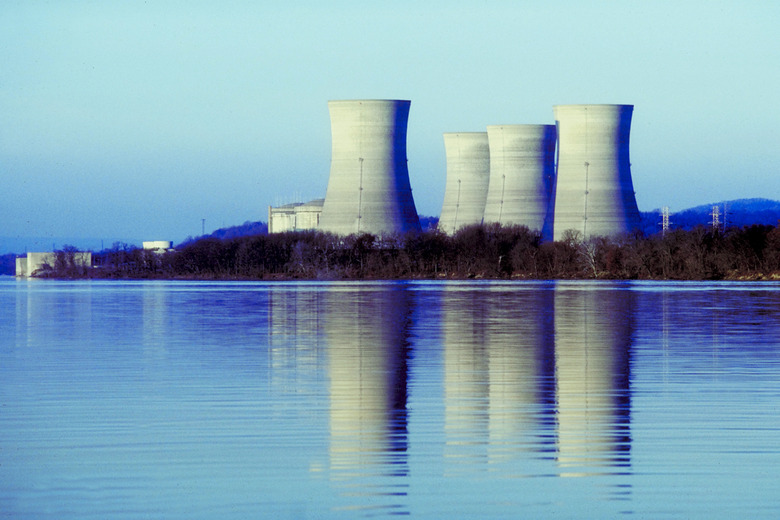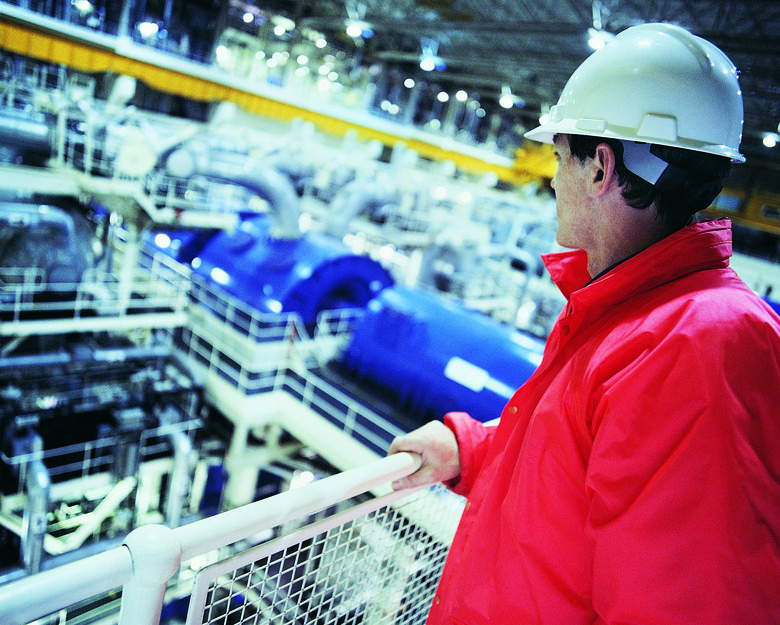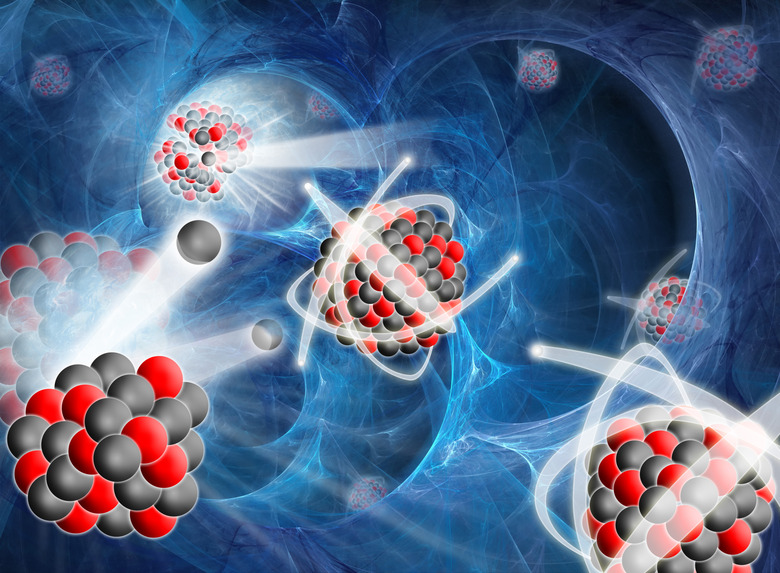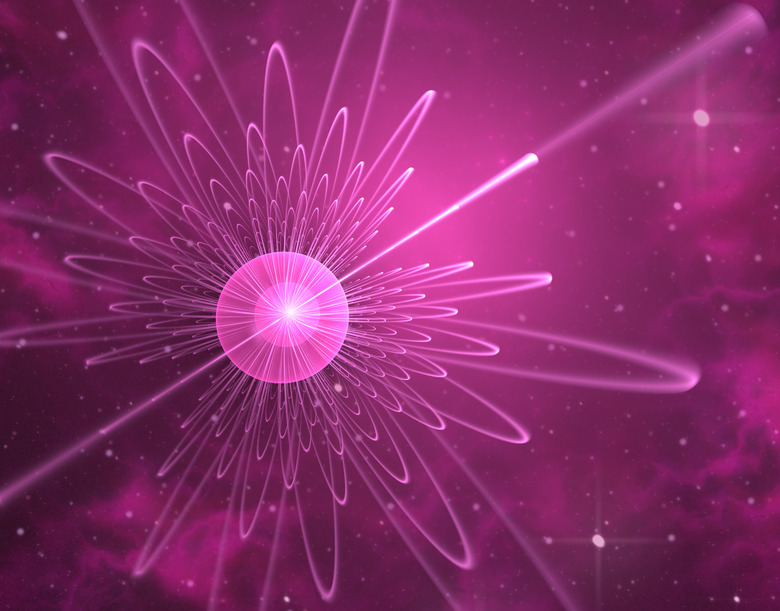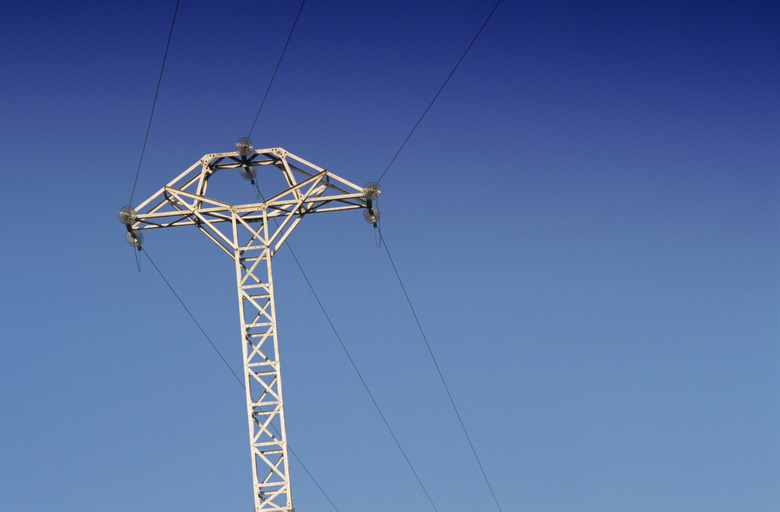Types Of Nuclear Energy
Many countries use nuclear reactions to produce energy throughout the world. According to the International Atomic Energy Agency in 2007, there were a reported 439 nuclear reactors operating in the world (see Reference #). Most of those reactors are operating within a few countries, namely, the United States, France, Japan, Russia and Korea.
What is Nuclear Energy?
What is Nuclear Energy?
Currently, there are two ways to produce nuclear energy, through the use of fission and fusion. Fission reactions are more easily controlled than fusion reactions. This is why all modern nuclear power plants use fission reactions to produce energy and electricity; there have been recent breakthroughs in the field of nuclear fusion that are promising for future energy production.
References
Fission
In nuclear power plants, the most widely used method to produce energy is through fission. Nuclear fission is the process of splitting atoms of a volatile element, usually uranium, in a nuclear reactor. When an atom splits, neutrons are released, the neutrons then strike other atoms and begin a chain reaction. This splitting of atoms produces great amounts of energy, which is then commonly used to heat water and create steam. The steam then exerts force on a turbine for electricity generation; this system is sometimes called a boiling water reactor.
Nuclear fission is carbon free (although the inputs and management is not always strictly supported by clean energy), but it does produce nuclear waste as a byproduct. Once the uranium fuel has split and undergone fission, it becomes used fuel or spent fuel. The U.S. Nuclear Regulatory Commission goes into detail on the radioactive waste from nuclear fission, but, briefly, the spent fuel leaves behind two essential types of dangerous products. Some lighter element isotopes, called 'fission products, like strontium and cesium only exist for years or decades, but they can still release a lot of heat and energy. The heavier 'transuranic' elements, like plutonium, are radioactive materials that create dangerous levels of harmful radiation, and plutonium takes tens of thousands of years to decay.
Fusion
Nuclear fusion is another method of producing energy. The sun uses this process to produce its energy. As of 2023, there have been massive breakthroughs in the field of nuclear fusion, and sustained breakeven fusion (meaning energy was produced). Nuclear fusion could prove to be an incredible energy source because it can use more abundant elements like hydrogen, and it does not use radioactive elements like enriched uranium (or produce radioactive waste).
Its primary use is still only in the production of nuclear weapons. Nuclear fusion works on the idea of forcing two nuclei together through intense pressure. When the two nuclei fuse, a new element is formed, and a large amount of energy is released. This process also sets off a chain reaction, which can be difficult to control.
History
Nuclear energy has been used to produce electricity for decades. Nuclear fission was first experimented on by Enrico Fermi in 1934. The idea to use nuclear energy to produce electricity was not realized until 1951. A station near Arco, Idaho, was the first to produce electricity from a nuclear reactor in that year. In the years after, several countries were using nuclear energy to produce electricity. Since then, nuclear energy has become a larger percentage of the world's power generation with many countries investing heavily in order to reduce carbon emissions and production of greenhouse gases.
There are safety concerns with nuclear plants, and past disasters – like those in Fukushima and Chernobyl – have caused long term ecological damage. Advanced reactors today are at a much lower risk of failure or contamination, but regulatory organizations like the U.S. Department of Energy and the Nuclear Regulatory Committee keep strict regulations and safety protocols in place.
TL;DR (Too Long; Didn't Read)
Although nuclear power reactors come with safety risks, they are much safer than traditional fossil fuels (like natural gas and coal), causing far fewer casualties and health issues for the amount of power produced. Their safety record is actually very similar to that of renewable energy sources, like wind and solar.
Uses
Nuclear energy has many uses, but most countries use nuclear fission to produce electricity. Unfortunately, the massive amounts of energy found in these nuclear reactions have been used to make nuclear weapons. These weapons have led to many deaths and political pressure, between their use at the end of WWII and the cold war, nuclear weapons have a well deserved negative reputation.
Because of this negative association, many opinions around nuclear energy and radioactivity are inherently biased against nuclear energy. The United States has been consistently decommissioning more nuclear plants. However, fission and fusion could play a crucial role in alleviating some of the stresses of fossil fuels to mitigate climate change. There have been promising new reactor designs and proposals in how to manage and safely dispose of nuclear fuel. As a clean source of energy, fission and fusion produce zero direct carbon dioxide, and they could be used to supplement renewable energy sources in the pursuit of net zero carbon emissions.
Cite This Article
MLA
Leone, Jay. "Types Of Nuclear Energy" sciencing.com, https://www.sciencing.com/types-nuclear-energy-5414792/. 6 June 2023.
APA
Leone, Jay. (2023, June 6). Types Of Nuclear Energy. sciencing.com. Retrieved from https://www.sciencing.com/types-nuclear-energy-5414792/
Chicago
Leone, Jay. Types Of Nuclear Energy last modified June 6, 2023. https://www.sciencing.com/types-nuclear-energy-5414792/
